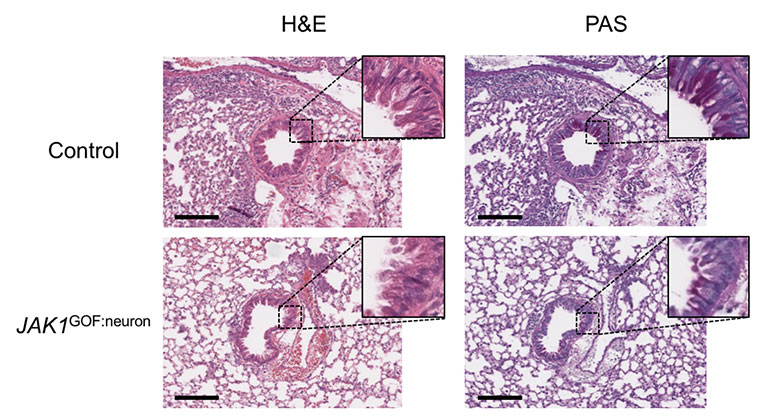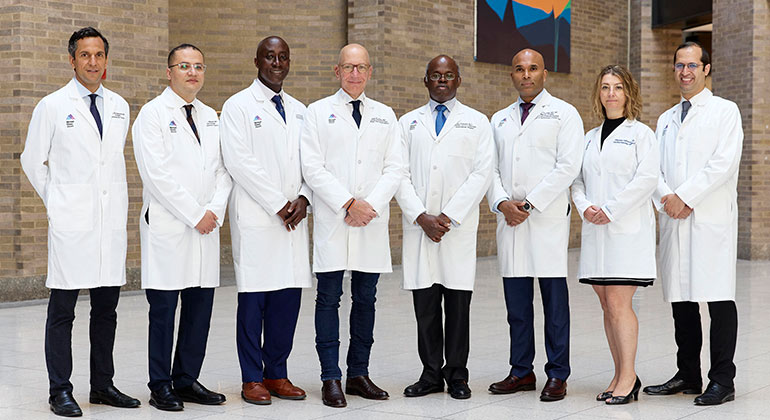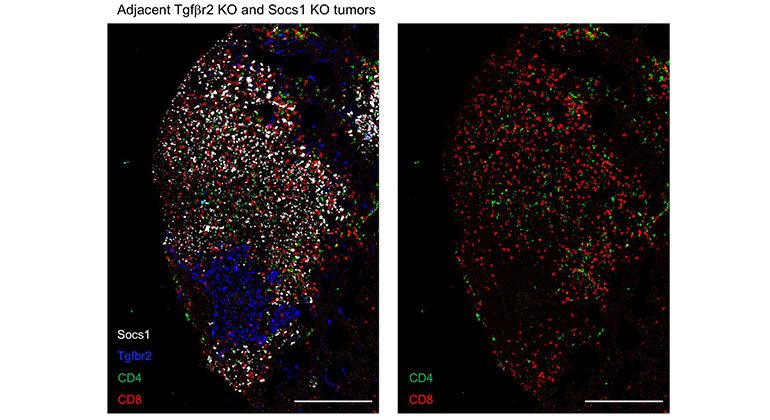Set of Molecules found to link Insulin Resistance in the Brain to Diabetes
A key mechanism behind diabetes may start in the brain, with early signs of the disease detectable through rising levels of molecules not previously linked to insulin signaling, according to a study led by researchers at the Icahn School of Medicine at Mount Sinai published today in the journal Cell Metabolism.
Past studies had found that levels of a key set of protein building blocks, branched-chain amino acids (BCAAs), are higher in obese and diabetic patient, and that this rise occurs many years before someone develops diabetes. Why and how BCAA breakdown may be impaired in diabetes and obesity remained unclear going into the current study.
“Our study results demonstrate for the first time that insulin signaling in the mammalian brain regulates BCAA levels by increasing BCAA breakdown in the liver,” said Dr. Christoph Buettner, MD, PhD, Associate Professor of Medicine at the Icahn School of Medicine and senior author of the new study. “This suggests that elevated plasma BCAAs are a reflection of impaired brain insulin signaling in obese and diabetic individuals.”
“What’s important is that rodents with impaired insulin signaling exclusively in the brain have elevated plasma BCAA levels and impaired BCAA breakdown in liver,” said Dr. Andrew C. Shin, PhD, an Instructor of Medicine at the Icahn School of Medicine at Mount Sinai and the first author of this study. “Since disrupted brain insulin signaling may cause the early rise of BCAAs seen in persons who eventually develop diabetes, the insulin resistance that leads to diabetes may actually start in the brain.”
“The results suggest that levels of BCAAs may prove to reflect brain insulin sensitivity,” Dr. Shin added. Dr. Shin also pointed out that the team’s newly discovered pathway is also found in organisms ranging from humans to rodents to worms. Mechanisms “conserved” across evolution are often of fundamental biological importance.
The initial discovery that started this line of investigation was made after proteomic and metabolomic studies of liver and plasma from rats that had been infused with insulin into the brain pointed toward a role of brain insulin signaling in BCAA catabolism. “Our study provides an example of how proteomics and metabolomics, techniques that survey proteins and metabolites allow researchers to come up with a hypothesis. They are also great discovery tools,” said Dr. Buettner.
The team then went on to test the concept in a variety of animal models such as mice, rats, and round worms. They were also able to confirm in prediabetic monkeys as well as obese and diabetic humans that elevated BCAAs are associated with decreased BCAA breakdown in liver.
This study was conducted through partnerships with Pacific Northwest National Laboratory, Pennsylvania State University College of Medicine, Duke University Medical Center, University of Ulm, University Medical Center Hamburg-Eppendorf and Oregon National Primate Research Center.
The study was funded by grants from the National Institute of Diabetes and Digestive and Kidney Diseases (NIDDK) to Drs. Shin and Dr. Buettner and the American Diabetes Association to Dr. Buettner.
About the Mount Sinai Health System
Mount Sinai Health System is one of the largest academic medical systems in the New York metro area, with more than 43,000 employees working across eight hospitals, over 400 outpatient practices, nearly 300 labs, a school of nursing, and a leading school of medicine and graduate education. Mount Sinai advances health for all people, everywhere, by taking on the most complex health care challenges of our time — discovering and applying new scientific learning and knowledge; developing safer, more effective treatments; educating the next generation of medical leaders and innovators; and supporting local communities by delivering high-quality care to all who need it.
Through the integration of its hospitals, labs, and schools, Mount Sinai offers comprehensive health care solutions from birth through geriatrics, leveraging innovative approaches such as artificial intelligence and informatics while keeping patients’ medical and emotional needs at the center of all treatment. The Health System includes approximately 7,300 primary and specialty care physicians; 13 joint-venture outpatient surgery centers throughout the five boroughs of New York City, Westchester, Long Island, and Florida; and more than 30 affiliated community health centers. We are consistently ranked by U.S. News & World Report's Best Hospitals, receiving high "Honor Roll" status, and are highly ranked: No. 1 in Geriatrics and top 20 in Cardiology/Heart Surgery, Diabetes/Endocrinology, Gastroenterology/GI Surgery, Neurology/Neurosurgery, Orthopedics, Pulmonology/Lung Surgery, Rehabilitation, and Urology. New York Eye and Ear Infirmary of Mount Sinai is ranked No. 12 in Ophthalmology. U.S. News & World Report’s “Best Children’s Hospitals” ranks Mount Sinai Kravis Children's Hospital among the country’s best in several pediatric specialties.
For more information, visit https://www.mountsinai.org or find Mount Sinai on Facebook, Twitter and YouTube.

New Insights Revealed On Tissue-Dependent Roles of JAK Signaling in Inflammation
Dec 21, 2023 View All Press Releases





